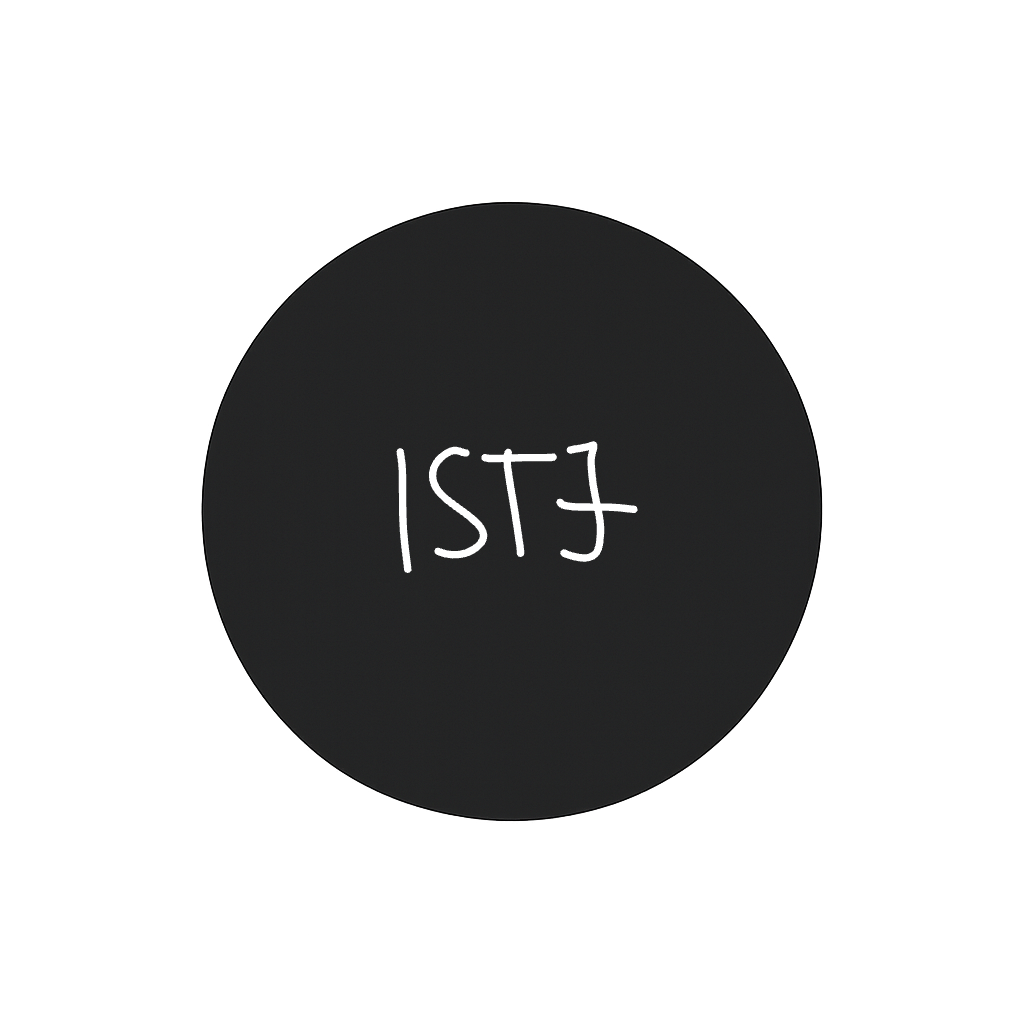The ISTJ personality type, as defined by the Myers-Briggs Type Indicator (MBTI), is known for its reliability, practicality, and strong sense of duty. Understanding the interplay of its cognitive functions—Introverted Sensing (Si), Extraverted Thinking (Te), Introverted Feeling (Fi), and Extraverted Intuition (Ne)—provides valuable insights into how ISTJs perceive the world, make decisions, and interact with others. Below is a comprehensive breakdown of these functions individually and in combination.
ISTJ Cognitive Functions Overview
Dominant Function: Introverted Sensing (Si)
Role: Si is the primary lens through which ISTJs understand the world. It allows them to draw from past experiences, create stability, and maintain a sense of continuity.
Characteristics: Detail-oriented, reflective, practical, focused on traditions, and attentive to sensory details.
Auxiliary Function: Extraverted Thinking (Te)
Role: Te helps ISTJs organize their external environment, make decisions efficiently, and implement their plans in a structured manner.
Characteristics: Logical, goal-oriented, decisive, systematic, and focused on achieving results.
Tertiary Function: Introverted Feeling (Fi)
Role: Fi provides ISTJs with a sense of personal integrity and helps them evaluate experiences based on their internal values.
Characteristics: Values-driven, introspective, focused on internal consistency, and concerned with authenticity.
Inferior Function: Extraverted Intuition (Ne)
Role: Ne allows ISTJs to explore possibilities, consider alternative perspectives, and adapt to new situations.
Characteristics: Creative, open-minded, curious, adaptable, and interested in exploring new ideas.
Interactions Between Cognitive Functions
Understanding how these functions interact can illuminate the complexities of the ISTJ personality. Here’s a detailed look at each pairing and combination:
Si + Te (Dominant + Auxiliary)
Synergy: This combination allows ISTJs to draw from their personal experiences while making logical and efficient decisions. Si provides a strong sense of stability, while Te helps them create practical plans and execute them effectively.
Application: ISTJs often use Si to provide a solid foundation of knowledge and Te to organize and implement their actions, making them dependable and efficient problem-solvers.
Si + Fi (Dominant + Tertiary)
Balancing Practicality with Values: Si drives ISTJs to focus on practical details, while Fi helps them ensure that their actions align with their internal values.
Application: ISTJs may use Fi to evaluate whether their actions are consistent with their personal beliefs, ensuring that their decisions are not only practical but also ethically sound.
Te + Ne (Auxiliary + Inferior)
Balancing Structure with Exploration: Te drives logical decision-making, while Ne encourages ISTJs to explore new possibilities and consider different perspectives.
Application: Developing Ne can help ISTJs become more open to change and new ideas, allowing them to adapt more easily to unfamiliar situations.
Si and Ne (Dominant and Inferior)
Balancing Stability with Flexibility: Si’s focus on stability can sometimes overshadow the need for adaptability emphasized by Ne.
Challenge: ISTJs may struggle to embrace change, leading them to resist new ideas or become overly attached to routine.
Growth Opportunity: Developing Ne can help ISTJs integrate their strong sense of tradition with a willingness to explore new possibilities, ensuring a more balanced approach to life.
Te and Fi (Auxiliary and Tertiary)
Balancing Efficiency and Values: Te emphasizes efficiency and logical decision-making, while Fi ensures that decisions honor the ISTJ’s internal values.
Application: ISTJs can navigate complex situations by balancing their logical approach with a sense of ethical integrity, allowing them to make decisions that are both effective and meaningful.
Practical Implications for ISTJs
Strengths
- Dependable Problem-Solving: ISTJs excel at providing practical solutions and implementing them efficiently, making them reliable and effective individuals.
- Attention to Detail: Si provides ISTJs with a strong ability to notice and remember important details, ensuring that their actions are thorough and consistent.
- Logical Efficiency: Te enables ISTJs to make decisions based on logic and efficiency, allowing them to achieve results effectively.
- Value-Driven Decisions: Developing Fi helps ISTJs ensure that their decisions align with their personal values, providing a sense of integrity in their actions.
Challenges
- Difficulty with Change: Ne, being less developed, can make it challenging for ISTJs to adapt to new situations or embrace unfamiliar ideas.
- Overemphasis on Tradition: Relying heavily on Si may lead ISTJs to resist change or become overly attached to routines, limiting their flexibility.
- Balancing Efficiency and Values: Ensuring that decisions are both efficient and aligned with personal values can sometimes be a delicate balance.
- Avoiding Rigidity: Focusing too much on stability and structure may cause ISTJs to overlook creative solutions or alternative approaches.
Growth Strategies
- Enhancing Ne: Engaging in activities that encourage creativity and open-mindedness, such as brainstorming or exploring new hobbies, can help strengthen Ne.
- Developing Fi: Practicing self-reflection and exploring personal values can help ISTJs develop Fi, aiding in more balanced decision-making and improving authenticity.
- Balancing Tradition with Flexibility: Making a conscious effort to embrace change while maintaining stability ensures a more adaptable approach to life.
- Considering Alternative Perspectives: Learning to view situations from multiple angles can help ISTJs become more flexible and open to creative solutions.
Conclusion
The ISTJ’s cognitive functions—Si, Te, Fi, and Ne—work in a dynamic interplay that defines their unique approach to life. By leveraging the strengths of each function and addressing their inherent challenges, ISTJs can achieve personal growth, enhance their effectiveness, and make meaningful contributions to their pursuits. Understanding these dynamics not only aids ISTJs in self-awareness but also helps others appreciate the reliability and practicality of this dutiful personality type.
***
